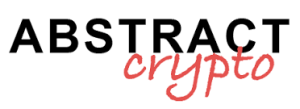The regulation of DeFi lending enters a crucial phase. A recent discussion between SEC staff and Term Finance highlighted how the Reves and Howey tests frame fixed-rate crypto loans executed via smart contracts and backed by high collateral. The takeaway? The technical architecture and interface management can make the difference between a “note” not subject to registration and a true “security” to be regulated, as noted in the SEC memo of September 15, 2025.
For a broader regulatory framework, please also refer to the international guidelines on crypto assets published by recognized supervisory bodies and the SEC updates on the activities of its crypto task force and the general principles collected in documents such as the IOSCO report on regulatory issues of crypto-assets.
According to data collected from on-chain analysis conducted on lending protocols and public metrics from Aave and MakerDAO, the collateral requirements for fixed-rate loans show typical LTV in the range of 120%–150%. Industry analysts also note that the adoption of reliable oracles and the technical separation between core smart contracts and front-end reduce the likelihood that the SEC will interpret such instruments as “investment contracts”.
In brief
- Loans short-term, fixed rate, with typical overcollateralization between 120% and 150%.
- Legal framework: the Reves test, used to exclude “notes” from the definition of securities, is compared with the Howey test applied to “investment contracts”.
- Decisive Node: the role of interfaces and operators in providing “efforts of others”.
What Emerged from the SEC–Term Finance Confrontation
Term Finance has introduced a short-term fixed-rate lending model, secured by crypto assets in overcollateralization and inspired by tri-party repurchase structures typical of traditional markets. The execution takes place in a non-custodial manner, via smart contracts: these allow real-time monitoring of positions.
Mechanics and Risk Management
- Collateral: high collateral requirements to absorb the volatility of crypto markets.
- Prices: use of decentralized oracles, such as Chainlink, to reduce the risk of data manipulation.
- Monitoring: continuous on-chain audit of positions and liquidation triggers.
- Structure: scheme similar to a tri-party repo to coordinate liquidity and counterparty management.
The Legal Framework: Reves vs Howey, Explained Simply
The two tests that guide the SEC analysis are fundamental:
- Reves determines when a “note” is excluded from the category of securities, evaluating purposes, investor expectations, market structure, and alternative protections.
- Howey examines whether there is an “investment contract”: investment of money in a common enterprise, with an expectation of profit based on the efforts of others.
In the context of fixed-rate DeFi loans, the practical distinction is clear: if the loan appears as a standard credit with well-defined risk and return, the analysis according to the Reves test may prevail; however, if the token or user experience fuels concrete expectations of profit linked to the activity of an identifiable team, the Howey interpretation becomes decisive.
The Controversial Issue: Interfaces, Secondary Markets, Retail Participation
Term Finance has highlighted three sensitive areas. Firstly, retail participation: the indiscriminate access of individual investors can trigger the application of protections typical of securities. Secondly, secondary markets: the transferability and trading of loan rights accentuate the similarity of tokens to tradable financial instruments. Finally, interfaces: a front-end that induces profit expectations, thanks to the presence of an identifiable team, reinforces the “efforts of others” criterion provided in the Howey test.
This analysis highlights how protocols with concentrated governance, aggressive marketing, and “packaged” yields may be subject to stricter scrutiny, even if the core remains on‑chain and transparent.
Why Technique Weighs on Regulation
Design choices are not neutral. The adoption of robust oracles, predictable liquidation mechanisms, real-time audits, and a clear separation between the on‑chain core and external interfaces can significantly reduce operational and market risks. Indeed, these features strengthen the Reves argument for standardized lending, especially if supported by clear documentation and independent audits.
- Transparency: dissemination of public metrics on collateral ratio, expected slippage, and liquidation times.
- Limitations: introduction of caps for exposures and institutional whitelists in high-risk contexts.
- Separation: distinction between core smart contracts and interfaces, with appropriate risk disclosure.
Dialogue with the SEC: roundtable, FinHub, and sandbox
The SEC staff continues to engage with the industry through thematic roundtables and channels like FinHub. Commissioner Hester Peirce has often advocated for “safe harbor” approaches, promoting experimental pathways. In this context, Term Finance has proposed the adoption of regulatory sandbox forms and continuous reassessment to prevent loans or tokens from being misunderstood as investment products.
The SEC has also scheduled a roundtable on financial privacy and surveillance, expected for October 17, 2025.
Practical Implications
For developers and protocols
- Design of a neutral front-end, with clear risk disclosure and a distinct separation from the on-chain core.
- Adoption of conservative parameters (LTV, liquidation thresholds) and transparent public reporting.
- Implementation of transparent governance that reduces dependence on a highly identifiable team.
For institutions and lending desks
- Preference for the integration of multiple oracles, independent audits, and checks such as KYA/KYB on counterparties.
- Risk management processes in line with the typical structures of tri-party repo contracts.
- In-depth legal assessment according to the Reves/Howey tests, based on the target market and the transferability of the assets.
Timelines and Next Steps
- Memorandum of the meeting: published on September 15, 2025, by the SEC staff.
- Analysis underway on the application of the Reves/Howey tests to fixed-rate DeFi loans.
- Roundtable on privacy and financial surveillance scheduled for October 17, 2025.
What it means for the market
If the “known” interpretation in Reves style prevails for standardized loans, protocols characterized by clear rules and transparency could scale with less regulatory friction. However, if interfaces and commercial narrative fuel profit expectations based on the efforts of third parties, the Howey test will remain the cornerstone of regulatory analysis. It must be said that the game is played on the boundary between regulated credit and disguised investment.
Conclusion
The comparison between the SEC and Term Finance highlights how compliance in DeFi lending does not solely depend on legal regulation, but also requires precise engineering and communication choices. With overcollateralization, reliable oracles, and on‑chain audits supporting the Reves test, and interfaces and governance that can fuel the Howey interpretation, success will depend on the balance between innovation and investor protection.


